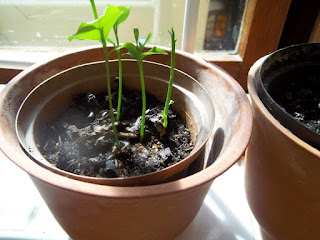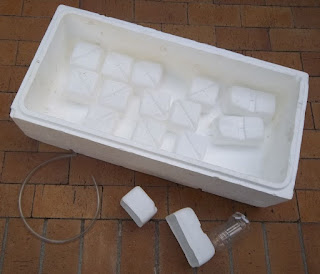We also intended to have a cellar below our kitchen floor. Cellars are not common in South Africa - and for the life of me I cannot figure out why not - they are such useful and secure storage areas.
So we excitedly proceeded with our foundations, only to be informed by our architect, who came to do a site visit, that we had incorrectly placed them on the land. Our building had to be 30 mtrs from the neighbouring fence - why??? In the towns you have to have permission to be within a metre of your neighbours fence - on a plot of land you need 30 mtrs? Makes absolutely no sense to me.
But, we had dug our foundations within that 30 mtr restriction...
So we had to start all over again, hiring the digger / loader, and digging a second set of foundations. This was done in such appallingly cold and wet weather that all thoughts of a cellar flew out the window.
But, our original cellar opening remains...
This hole will, hopefully, one day be a stand alone cellar with an earth / living roof. I reckon, given the slope of the land, that we should be able to site the doorway on the lower (eastern) side and we will only have to increase the height of the higher side by about 1/2 mtr.
But, that is in the future, when finances are hopefully, more stable (i.e. when this damn recession is finally over).
Until then, the future cellar is a ruddy inconvenient hole in the ground. And one which fills up with water every time it rains.
In the past certain members of the family has been known to climb into the muddy hole on a hot day and splash about with a resident frog, but I have a feeling that that will not happen again. One frog is possibly (shudder) bearable, but the number of tadpoles residing in that hole after the past winter rains... I counted 40 - with many more that escaped the tally.
Guess that mozzies won't be a problem this summer :) And I wonder if frogs eat (yellow) slugs?


















































